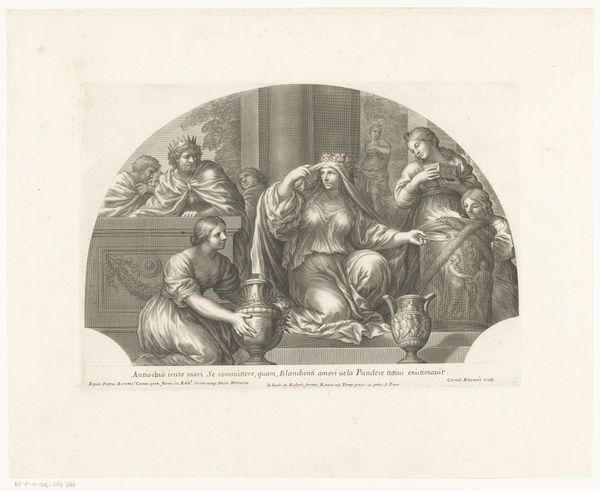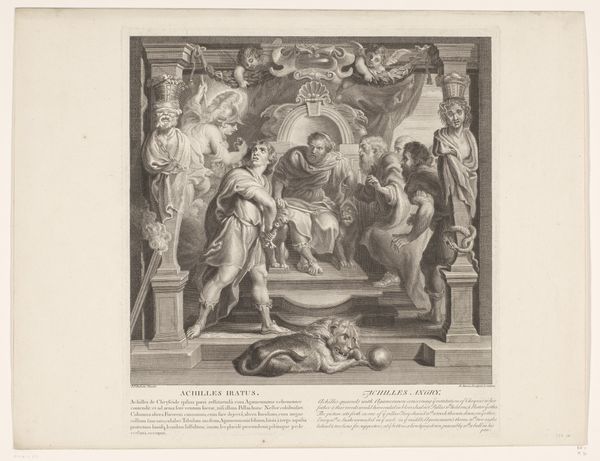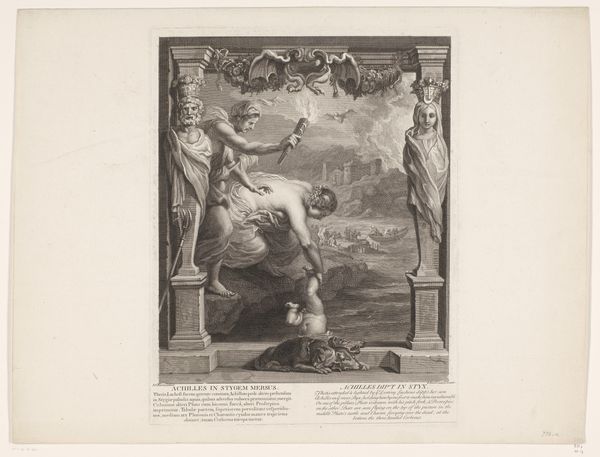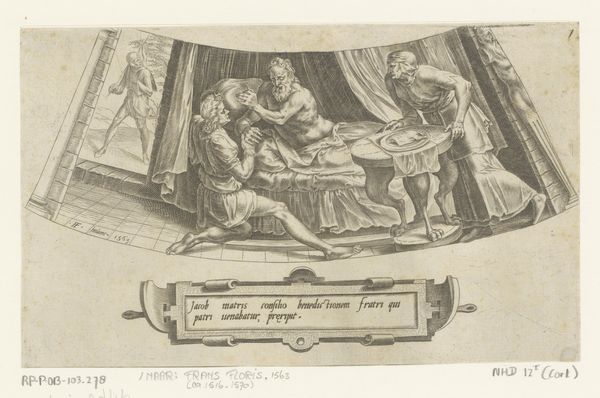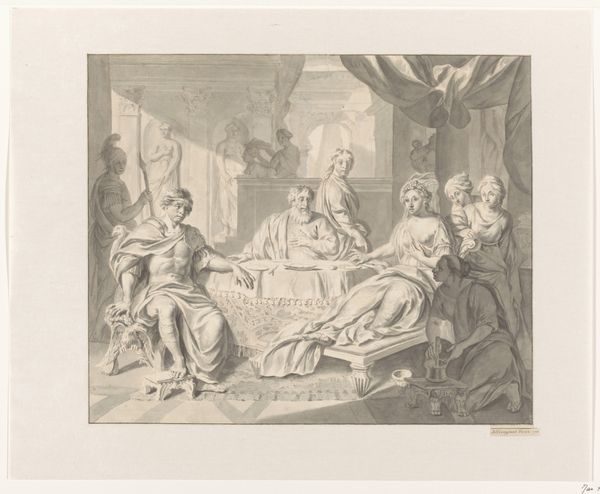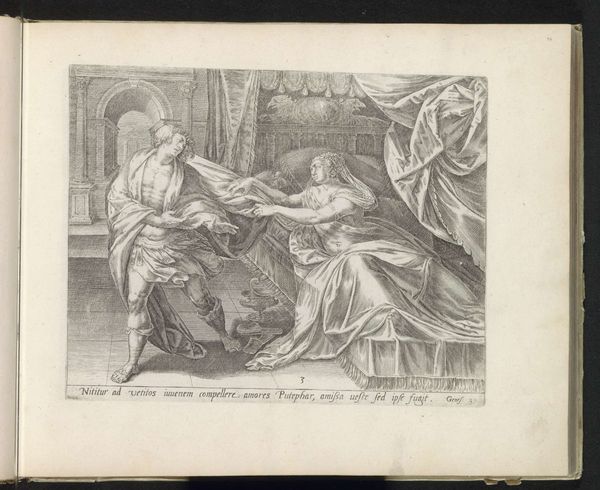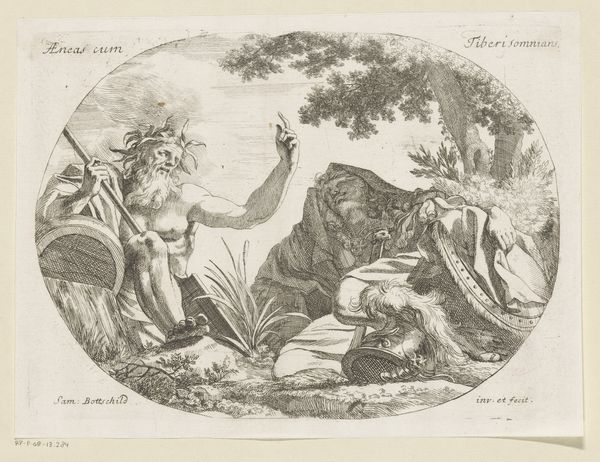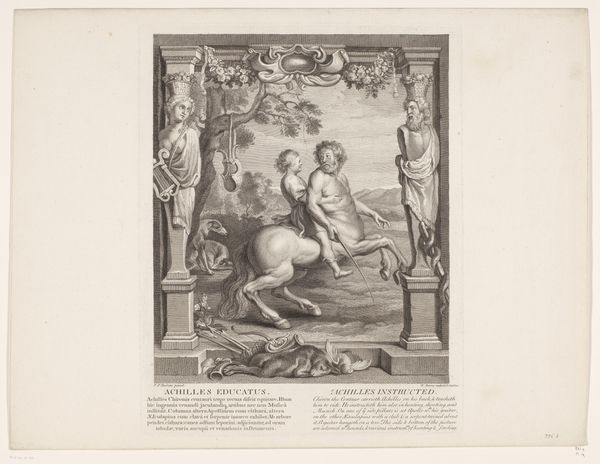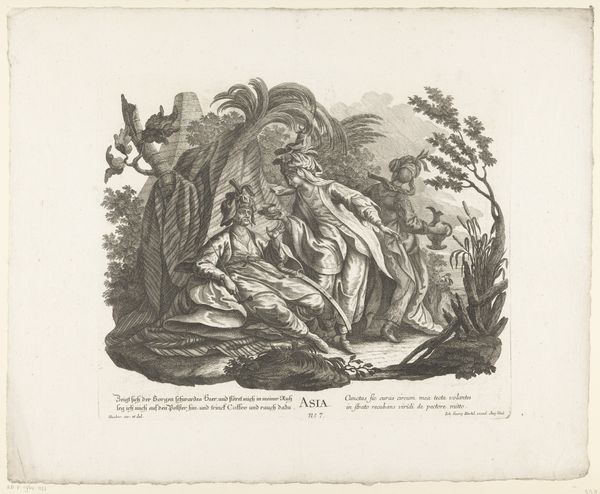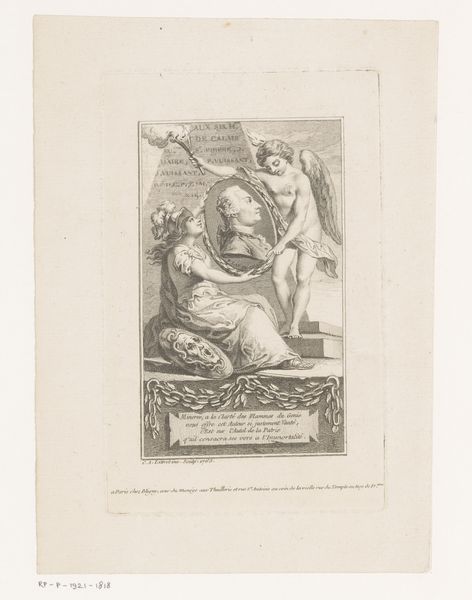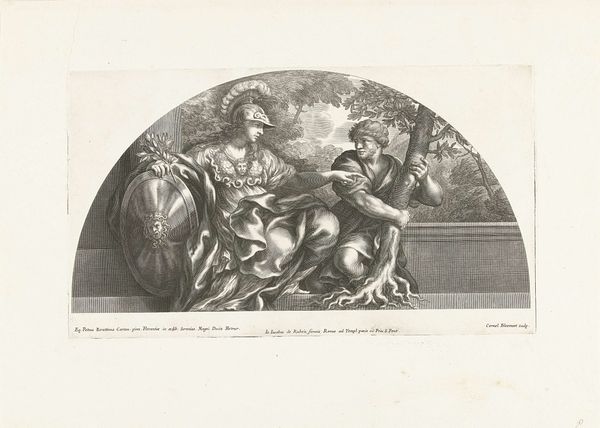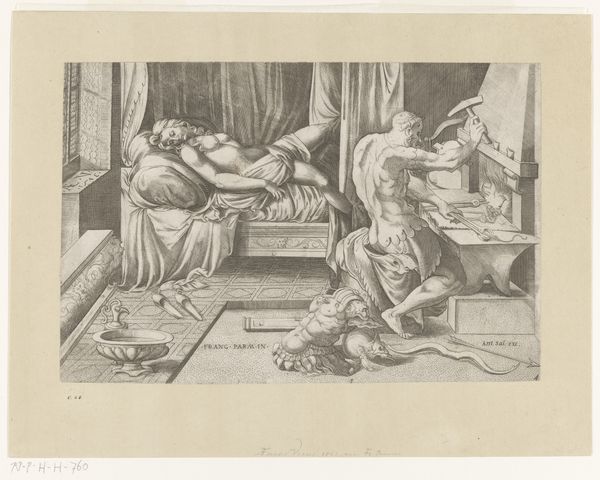
print, engraving
#
baroque
# print
#
old engraving style
#
figuration
#
history-painting
#
nude
#
engraving
Dimensions: height 220 mm, width 312 mm
Copyright: Rijks Museum: Open Domain
François Spierre created this print titled ‘Crispus en Fausta’ during the Baroque era. This was a period when European art and culture were heavily shaped by the Catholic Church and powerful monarchies. Here, we see a dramatic scene unfolding, likely depicting a moment of intense conflict or revelation between the figures. What does it mean to represent this story during the Baroque era, in which there was such an emphasis on moral narratives? The print hints at the gender dynamics of the time, portraying Fausta in a position of apparent power or influence, while Crispus seems to be recoiling or in distress. I wonder how Spierre, and his audience, viewed the relationship between men and women, especially in the context of religious and political authority. Does this work reinforce traditional ideas, or does it offer alternative perspectives? Ultimately, this work is a complex reflection of Baroque society. It speaks to the period’s values, beliefs, and power structures, as well as the emotional and personal dimensions of human experience.
Comments
No comments
Be the first to comment and join the conversation on the ultimate creative platform.
